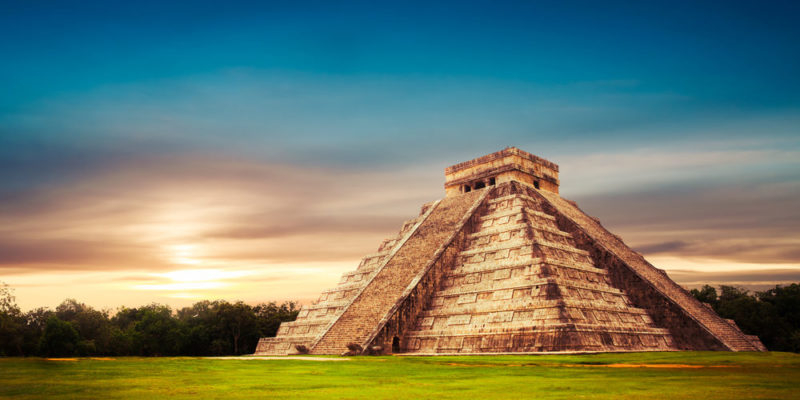|
7/12/2023 Archaeology Is Flipping the Script on What We Know About Ancient Mesoamerica By: Gary M. Feinman & David M. CarballoRead NowRecent archaeology emerging from ancient Mesoamerica is flipping the script of public understanding about the people and institutions that inhabited this world: the evidence tells us that cooperative and pluralistic government was at least as common and more resilient than despotic states. This more complex picture and the achievements of Mesoamerica’s peoples are all the more impressive given the area’s rugged terrain and resource constraints. Compared to ancient Eurasia, the inhabitants of Mesoamerica—the region stretching from Costa Rica to central Mexico—lacked beasts of burden and wheeled transport, and the use of metals was generally limited. Until recently, our understanding of how most societies and early states developed was heavily grounded in interpretations of urban societies in Eurasia. Despotic, coercive rule was assumed (except for ancient Athens and Republican Rome), the actions of the elite were ascribed great importance, and core functions of the economy were presumed to be in the hands of the ruler. Precolonial Mesoamerica doesn’t fit this cookie-cutter framework: neither was economic production or distribution centrally controlled by despotic rulers, nor was governance in societies with very large populations universally coercive. This new perspective is the outgrowth of a decades-long shift in archaeological research’s focus from temples and tombs to regional settlement patterns, urban layouts, house excavations, domestic economies, and agricultural production. By concentrating on the archaeological record, recent generations of researchers have brought fresh attention to features of pre-colonial Mesoamerica that did not fit entrenched stereotypes, many of which had their roots in the nineteenth century. Mesoamerica’s cities and large-scale societies arose independently of other global regions, spawned by their own regional populations. Mesoamerican technological development never experienced the centralizing impact of the monopolization of bronze weaponry through control of scarce tin deposits, nor the “democratizing” or “decentralizing” effects of the adoption of more widely available iron. Mesoamerica was also spared the stark inequalities in military and transportation technology that appeared in Eurasia when some societies developed the chariot, serious naval capabilities, and fortified palaces while others lagged behind. In Mesoamerica, military might came through the control of large infantries using weapons crafted primarily from widely available stone, all of which made for generally more balanced political relations than in Eurasia. Pre-Hispanic Mesoamerica is therefore emerging as an ideal place to examine the different ways that humans coalesced in urban contexts, in both collective and autocratic political formations, without some of the key factors that earlier scholars have traditionally seen as necessary or transformative for the rise of premodern societies. How were these large, preindustrial urban centers in Mesoamerica organized? Were they long-lasting? And if so, what accounts for their comparative degrees of resilience across time? In a 2018 study, we coded data from a carefully selected sample of 26 precolonial Mesoamerican cities and prominent political centers. We found that more than half of them were not despotically ruled and that the more collective political centers had greater resilience in the face of droughts and floods, and warfare or shifts in trade. Cities that addressed their social challenges using more collective forms of governance and resource management were both larger and somewhat more resilient than the cities with personalized rulership and more concentrated political power. In general, collectively organized political centers relied more heavily on internal finance generation, such as taxes, as compared to the more autocratic centers that relied more on external financing, such as monopolized trade networks and war booty. The more that political elites can support themselves without relying on financing from the general population, the less they face accountability from the people, and the greater the likelihood that governance and power are hoarded. Additionally, higher levels of internal financing and communal resources often corresponded with evidence of the wider circulation of public goods and the bureaucratization of civic offices. Collectively organized centers with these features as well as spatial layouts, such as large open plazas and wide streets, that provided opportunities for householders and urban dwellers to communicate and express themselves seem to have fostered community persistence as major centers. In a later study that included an updated and expanded sample of 32 well-researched Mesoamerican cities, we found that centers that were both more bottom-up and collective in their governance, were more resilient. While some of these cities had palaces and monuments to rulers as their focal points, others featured more shared and equitably distributed forms of urban infrastructure. This includes apartment compounds, shared terraces or walls within neighborhoods, neighborhood plazas, temples and other civic buildings, and shared roads and causeways, all of which required cooperation and collective labor for their construction and maintenance and would have facilitated more regular face-to-face interaction and periodic public gatherings. The implications from this archaeological research are too informative and powerful to stay put in textbooks. They resonate with evolving views of our present world, which are finding that public space, open communication, fair taxation, and effective bureaucracy can be cornerstones of well-being. These parallels with and understandings from the past can be insightful for us today as models to guide our future planning and identify the social models that best position us to survive the tests of time. AuthorGary M. Feinman is an archaeologist and the MacArthur curator of anthropology at the Field Museum of Natural History in Chicago. This article was produced by Human Bridges, a project of the Independent Media Institute. Archives July 2023
0 Comments
Leave a Reply. |
Details
Archives
July 2024
Categories
All
|

 RSS Feed
RSS Feed